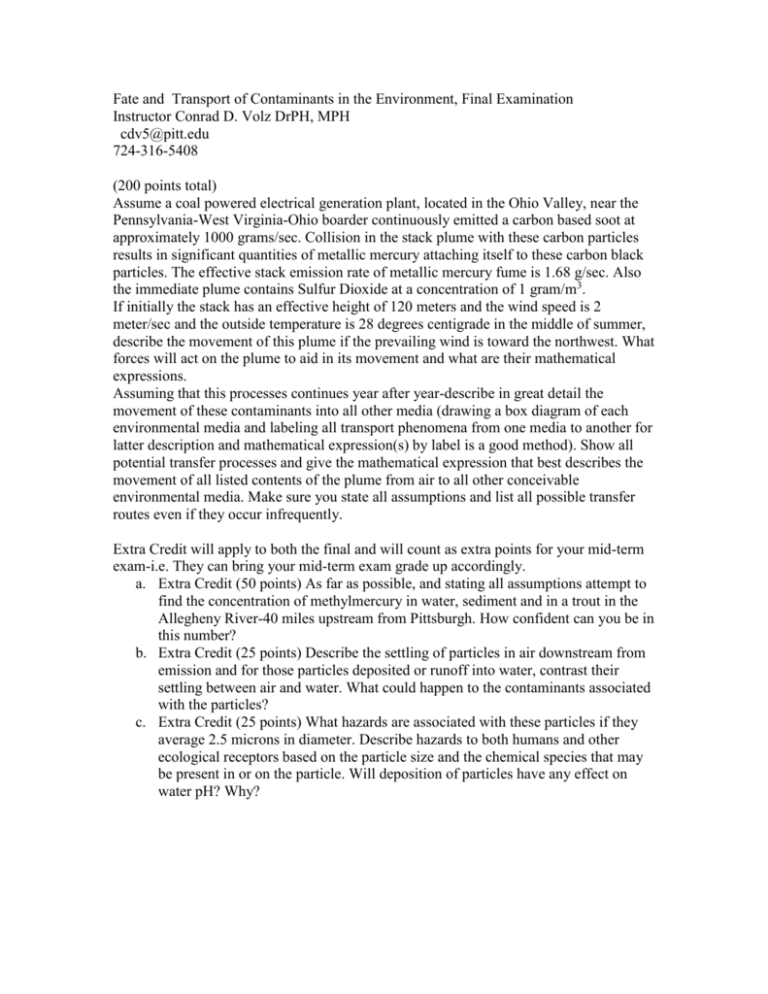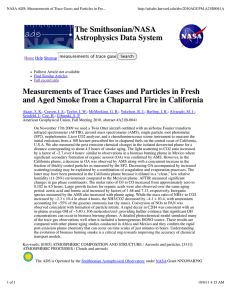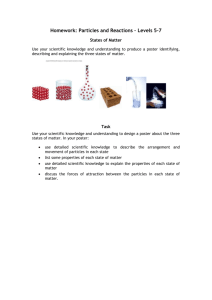Fate and Transport of Contaminants in the Environment, Final
advertisement

Fate and Transport of Contaminants in the Environment, Final Examination Instructor Conrad D. Volz DrPH, MPH cdv5@pitt.edu 724-316-5408 (200 points total) Assume a coal powered electrical generation plant, located in the Ohio Valley, near the Pennsylvania-West Virginia-Ohio boarder continuously emitted a carbon based soot at approximately 1000 grams/sec. Collision in the stack plume with these carbon particles results in significant quantities of metallic mercury attaching itself to these carbon black particles. The effective stack emission rate of metallic mercury fume is 1.68 g/sec. Also the immediate plume contains Sulfur Dioxide at a concentration of 1 gram/m3. If initially the stack has an effective height of 120 meters and the wind speed is 2 meter/sec and the outside temperature is 28 degrees centigrade in the middle of summer, describe the movement of this plume if the prevailing wind is toward the northwest. What forces will act on the plume to aid in its movement and what are their mathematical expressions. Assuming that this processes continues year after year-describe in great detail the movement of these contaminants into all other media (drawing a box diagram of each environmental media and labeling all transport phenomena from one media to another for latter description and mathematical expression(s) by label is a good method). Show all potential transfer processes and give the mathematical expression that best describes the movement of all listed contents of the plume from air to all other conceivable environmental media. Make sure you state all assumptions and list all possible transfer routes even if they occur infrequently. Extra Credit will apply to both the final and will count as extra points for your mid-term exam-i.e. They can bring your mid-term exam grade up accordingly. a. Extra Credit (50 points) As far as possible, and stating all assumptions attempt to find the concentration of methylmercury in water, sediment and in a trout in the Allegheny River-40 miles upstream from Pittsburgh. How confident can you be in this number? b. Extra Credit (25 points) Describe the settling of particles in air downstream from emission and for those particles deposited or runoff into water, contrast their settling between air and water. What could happen to the contaminants associated with the particles? c. Extra Credit (25 points) What hazards are associated with these particles if they average 2.5 microns in diameter. Describe hazards to both humans and other ecological receptors based on the particle size and the chemical species that may be present in or on the particle. Will deposition of particles have any effect on water pH? Why?











